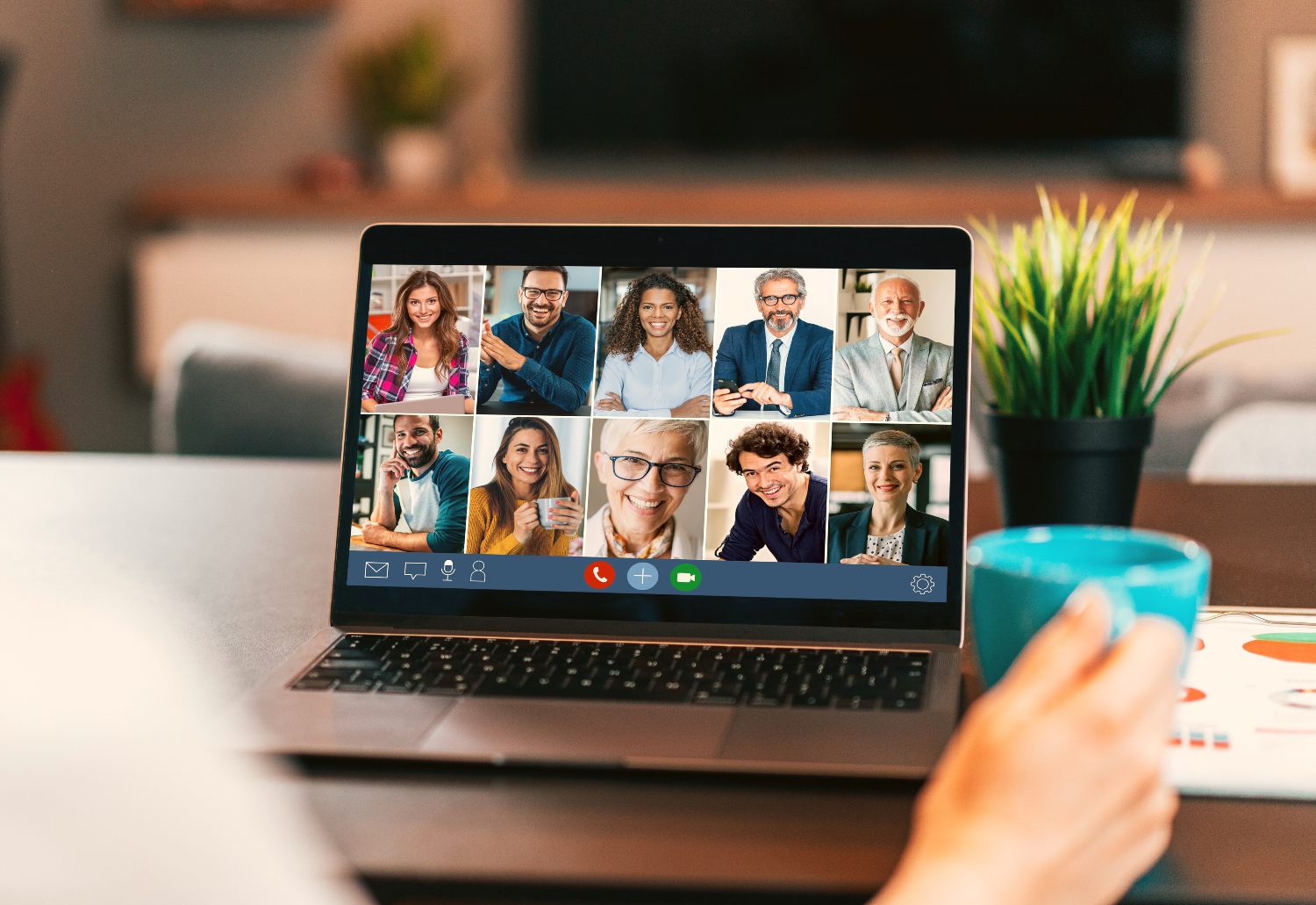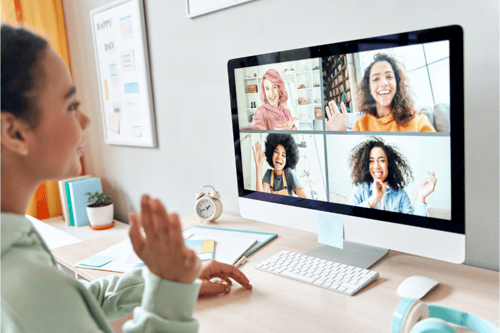
Online vs Face-to-Face Market Research Post-Covid: Which is Best for Research Participant Recruitment?
The world of research participant recruitment has undergone a huge shift since the COVID-19 pandemic. While digital research methods kept market research alive during lockdowns, the question remains: should researchers recruit participants for research online or face-to-face (F2F) in today's landscape?
At Angelfish Fieldwork, we’re experts in high-quality participant recruitment, and we’ve been closely monitoring the evolving market research space. So, which approach delivers the best insights—online or in-person? Read on as we explore the benefits and drawbacks of both.
How Has Research Participant Recruitment Changed Post-COVID?
The COVID-19 pandemic left nothing and no-one untouched…and the UK market research industry was certainly no exception.
Before the pandemic, in-person focus groups and interviews were the gold standard for qualitative research. But when lockdowns hit, researchers pivoted to online methodologies (Zoom and Teams), leveraging video conferencing and messaging platforms (WhatsApp) to keep projects running. They also relied on using the market research online community methodology more prevalently.
Now in 2025 and in a post-COVID world, market researchers have either moved back towards F2F methods, such as in-person focus groups and one-to-one or at-home interviews while others have taken the approach to stay online as this is a more accessible option.
Research conducted by MRS and Watermelon found that 5% of businesses reported that they would no longer offer F2F market research services in the future.
This has then left us with a single, yet complex-beneath-the-surface question: Which approach is better for your market research post-COVID; online or F2F?
Our experts have answered this very question below, breaking down the benefits and drawbacks of both approaches and reviewing the evidence for each before coming to a final conclusion (click the links below to jump to different sections of the blog!):
- The benefits of online market research
- The drawbacks of online market research
- The benefits of F2F market research
- The drawbacks of F2F market research
- The verdict
- How we can make these methodologies better

The Benefits of Recruiting Research Participants for Online Studies
1. More Accessible and Inclusive
Recruiting participants online makes research more geographically diverse and inclusive. Participants only need a device, a microphone, and an internet connection. This eliminates travel barriers.
What’s more, those with accessibility needs can take part in the comfort of their own home, and provisions can be put in place to make it as easy for them as possible to take part.
2. Encourages Honest and Thoughtful Responses
Jigsaw Research* found that introverts felt more confident to share their opinions online than they did in person. As a result, online research means you are likely to get more rounded and inclusive insights than you perhaps might in an F2F setting.
3. Cost-Effective and Efficient
Online research eliminates venue costs, travel expenses, and logistical complications. It also speeds up recruitment and scheduling, enabling faster turnaround times for projects.
4. Less Group Influence = More Individual Opinions
Online, participants are generally less influenced by those around them as they are in the comfort and safety of their own home, and behind the safety of a computer screen. As a result, they tend to be more honest about their thoughts and feelings.
As The Nursery Research and Planning* found in their own study, this was even more profound in their instant messaging group, compared to the video chat. Thanks to participants only being identifiable by first name – and therefore being semi-anonymous – participants were much more direct and honest with their thoughts!
5. Easier to Recruit Niche Audiences
Finding specific demographics such as people with rare medical conditions or professionals in highly specialised industries is often easier online than in a physical location.
The Drawbacks of Online Research Participant Recruitment
1. Weaker Group Dynamics
While being in their own home might boost a participant’s sense of individuality and anonymity, making them more open, considered and honest, they typically don’t form a group bond in the same way that participants in F2F groups do (more on that below).
In fact (as found by The Nursery Research and Planning), while participants are keen to voice their opinions, this tends to be more about reinforcing their own sense of identity, rather than contributing to a group consensus.
This is important to keep in mind for your research, as humans are ultimately social creatures, and interact in group settings on a daily basis; so, if you’re looking to generalise your results to the population as a whole, your results may not be as applicable if gathered from an online setting.
2. More Moderator-Led
As found by both Jigsaw Research and The Nursery Research and Planning, online studies tend to take less of a “discussion” route than F2F studies, with conversation not flowing as naturally as they would in person.
As a result, moderators or researchers generally end up prompting or guiding the conversation, which increases the risk of researcher bias influencing the insights gathered.
3. Screen Fatigue and Engagement Issues
In a world where we’re all “Zoomed out,” participants may be more easily distracted orless engaged. In an online study, compared to if they are in a room with other participants (it’s a lot more difficult to sneakily check your phone in person than it is on a video call!).
4. Technical Challenges
Imagine being in the middle of a brilliantly insightful online discussion with your participants, and bam – the platform you’re using crashes for one or all of your participants!
The flow of conversation is interrupted, insights are lost, you’ll have to make rearrangements and adjustments, and you may even have dropouts from the study.
Of course, this can be prevented by running tech validations and checks with participants prior to the research, but it’s an important factor to keep in mind.
The Benefits of Recruiting Research Participants for Face-to-Face Studies
1. Stronger Group Dynamics
In The Nursery Research and Planning’s study, participants were examined from both a social identity and personal identity perspective.
In their F2F focus group setting, they found that participants engaged more with their social identity – and this was the case regardless of which side of the debate they were on!
What’s more, in person, participants can more easily read each other's body language and understand different tones of voice.
In The Nursery’s study, all the above resulted in the participants being more deeply involved in the group dynamic, as well as joking and laughing with each other, demonstrating F2F research to be highly applicable to the population as a whole.
2. More Natural Conversations
Unlike online groups, which we earlier mentioned are less discussion-based, conversation flows easily and naturally in a shared physical space, with participants being more receptive and responsive to each other's ideas, and moderators or researchers not usually needing to prompt.
3. Greater Engagement
In-person settings minimise distractions, ensuring participants are more focused, engaged, and invested in the study.

The drawbacks of Face-to-Face Research Participant Recruitment
1. Risk of Less Honest Responses
In an in-person setting, participants are generally more concerned about being liked and accepted by the group compared to in an online environment.
As humans are naturally more guarded when they meet strangers for the first time (which is nearly always the case in market research), this may mean that participants aren’t quite as open and honest about their true opinions.
2. Harder to Recruit a Representative Sample
While this is great for generalising results to the population as a whole, it tends to be less representative of the individuals taking part in the research.
3. Participants May Miss the Chance to Share Their Opinions
As Jigsaw Research found in their research, one participant felt like they couldn’t “get a word in" in F2F projects, and that “the mouthy types dominate.”
Indeed, as mentioned above, introverts tend to feel more able to contribute in a virtual environment, so it may be that vital insights are missed in an F2F setting.
4. More Logistically Challenging
Compared to online, F2F research incurs greater costs, both for the researchers (venue hire, travel costs, refreshment provision etc) and the participants (travel and parking costs).
It is also much more difficult to get a representative sample, as your ideal participants may not be able to travel to your specified venue.
What’s the Best Approach for Research Participant Recruitment?
Here’s our verdict: online and face-to-face research each offer unique benefits, and one isn’t inherently better than the other. Instead, the best approach is hybrid research, blending both methodologies to harness their respective strengths.
How to Improve Online Research
- Ensure you use the best technology available, and have back-ups available in case of crashes
- Include an overrecruit so that you can guarantee a full quota of participants.
- Encourage a group dynamic and individuality by referring to people by nameand using prompts to enable them to work together.
- Have cameras and microphones on so that body language, facial expressions and tone of voice can be easily read and understood by all involved.
- Ensure participants have no distractions around them – e.g., phones off, doors closed.
How to Improve Face-to-Face Research
- Remind participants that this is a safe space where they can share how they really feel without judgement. Choose a comfortable, private venue that promotes this feeling of safety!
- Include warm up/ice-breaker activities to help your participants feel more comfortable, break down barriers, help your participants have fun and subsequently boost their engagement.
- Ensure every participant has the opportunity to express their thoughts and opinions – for example, if you spot that one participant is being especially quiet, or has tried to speak but has been interrupted, give them the opportunity to speak.
Need Help with Research Participant Recruitment? We’ve Got You Covered!
At Angelfish Fieldwork, we’re experts in high-quality research participant recruitment, whether you’re conducting research online, in-person, or both for our clients.
With over ten years of experience sourcing engaged, high-quality participants for leading brands, we know exactly how to connect you with the right people for your study.
Looking to recruit participants for your next market research project?
*Many thanks to Peter Totman, Head of Qualitative Research, Jigsaw Research, for his discussion on “The zoom group fantasy: Asking some hard questions about online qual” and Dr Emma McHarg, Head of Data Science and Lucy Foylan, Account Director at The Nursery Research and Planning for their presentation on “A hybrid future: Exploring human interactions on- and off-line" at Impact 2022, whose research has been referenced throughout this blog.














